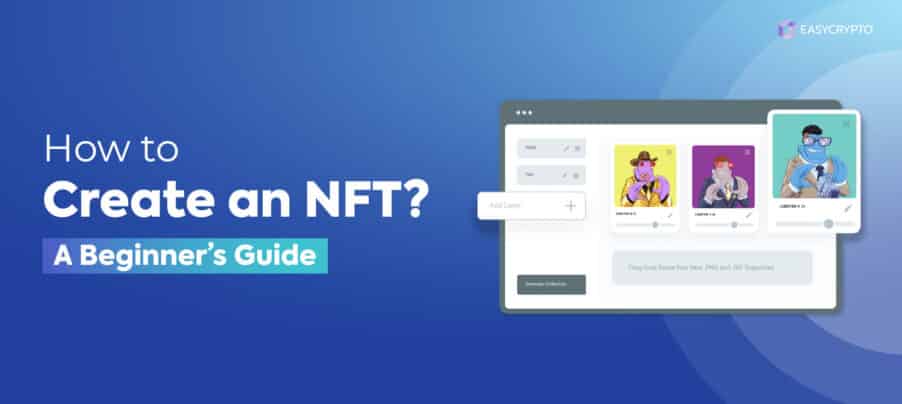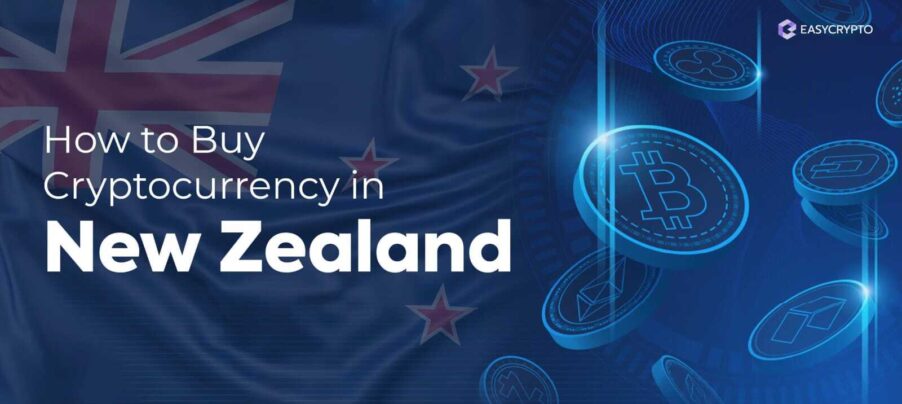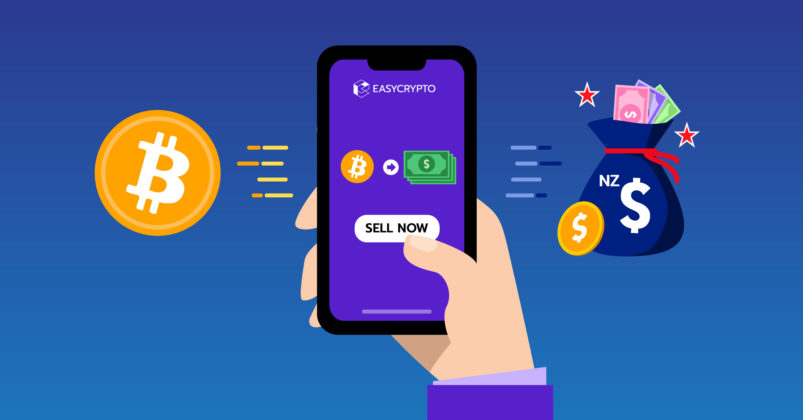How to Create an NFT?
Take a closer look and learn how you can create your own non-fungible tokens (NFTs) with your digital creations.


There’s a new form of digital asset that is increasingly popular lately. They are called non-fungible tokens, or NFTs, and these unique collectible assets are selling at insane prices in the market.
Last year, a piece of non-fungible token (NFT) art called Everydays: The First 5000 Days created by Mike Winkelmann a.k.a. the Beeple was sold at Christie’s auction house to a person namely Vignesh Sundaresan—better known as MetaKovan—for $69.3 million, making it the third-most expensive work sold by a living artist at auction.
Fortunately, NFT isn’t just for the famous and tech-savvy. In this article, you’ll learn how to create your very own NFT and potentially sell it at a good price too!
What is an NFT?
Before we proceed with creating an NFT, let’s quickly define what a non-fungible token is.
A non-fungible token, or NFT, is a type of unique digital asset that can represent a tangible or intangible digital property and/or goods.
With that definition, you can think of NFTs like a digital certificate, or a digital fingerprint. The key takeaway is the non-fungible aspect. Non-fungible is just another way of something something is unique, one-of-a-kind and cannot be exchanged for another.
Example:
- US Dollar is fungible because there are many like it, and can be exchanged for one another.
- Mona Lisa painting by Da Vinci is non-fungible because it is the only one in existence and cannot be exchanged by any other painting.
In simpler terms, an NFT is just a tag with a unique identifier that lives on the blockchain. It works like a real-life certificate of authenticity, but for digital assets.

Of course, the use of NFTs is not limited to the digital realm. You can link the identity of a tangible object, such as a pair of limited-edition sneakers, with an NFT to enforce its authenticity.
That way, there is no way for anyone to counterfeit these shoes and sell them to the market as if they were the original, even if they are made of exactly the same material and quality.
Right now, though, most people apply NFT technology to create digital assets based on digital files, such as videos, images, and audio files.
Related: What are NFTs and How Do They Work?
How to create an NFT?
There are many items, tangible or digital, that can be issued as NFTs on the blockchain. Your artwork can be turned into an NFT.
Fun fact: The process of creating an NFT is called minting.
Creating an NFT is actually easier than most people think. You don’t need fancy tools to create an NFT. You can even do it from your smartphone.
Step-by-step process of creating an NFT
- Decide what you’re going to mint
When you mint and sell NFTs, you’re not selling a copy of your work. You are selling the exclusive right to own it. One of the values of NFTs is rarity and exclusivity.
The CryptoPunks, for example, are limited. There are only 10,000 of them in number with each one of them carrying a unique characteristic. That makes them rare and exclusive at the same time.
Of course, think about a fair price for it. That’s a very complex topic that we won’t get into now, but one factor you can think of when valuing your NFT is how it can add a unique value to the buyer. - Choose an NFT minting platform
There are a variety of NFT marketplaces that offer you a way to mint your creations as NFTs. Below are some options to get you started with:
OpenSea
One of the longest-running peer-to-peer NFT marketplaces on the Web. You can sell non-fungible tokens for artwork, sports collectibles, virtual worlds, and even domain names.
Rarible
Rarible marketplace is a place where you can buy and sell NFTs that represent digital art. However, You can also buy and sell many other kinds of digital collectibles.
Holaplex
Holaplex provides free tools for independent artists, musicians and creators to easily create an NFT store and marketplace with no technical know-how. - Mint your NFT
Now comes the actual step to mint and list your very first NFT project.
Remember, NFT minting platforms are part of the decentralised web, meaning that you must use a crypto wallet to pay for minting fees.
In this example, we’ll be using OpenSea, which uses the Ethereum ecosystem.
Metamask is one example of a decentralised non-custodial Ethereum wallet.
Once you unlock your crypto wallet, OpenSea will ask permission to connect with your wallet.
Once connected, you can click on ‘Create’. OpenSea will then ask you to upload a file. The size limit is 100 MB on this platform.
Scrolling down the page, you will encounter the below field:
This is simply where you select how you want to pay for minting fees. Currently, using Ethereum’s network is expensive.
There are many reasons why a more advanced user will want to use Ethereum, but for now, let’s stick to the cheaper network Polygon. - Share and sell your NFT
After minting your NFT, you can sell them by clicking the “Sell” button on the right hand side of this page.
Set the initial price for your NFT. Please be aware that the minimum price is 0.0002 ETH.
Once you’ve set your price, you’ll come to this page to complete your listing with your Metamask wallet.
,
Now, you may be asking yourself — is your NFT hosted in OpenSea?
The answer is no, you are still the owner of the NFT until it is sold. It is still under your full custody, meaning that if you lose the very wallet that you used to mint it, you will completely lose that NFT.
And that’s it! The process for minting NFTs is pretty straightforward if you think about it, and is much easier than what most people think.
Additionally, check this quick facts table that may help you decide on which one of the three you will use for your first NFT project:
| Features | OpenSea | Rarible | Holaplex |
| Blockchain used | Ethereum, Polygon | Ethereum, Flow, Texos, Polygon | Solana |
| Wallet used | Metamask, Trustwallet, etc | Metamask, Portis, Torus, etc | Phantom, Solana wallet, etc |
| Minting fees | Based on the blockchain used and it can be almost free | Based on the blockchain used and it can be almost free | 0,01 SOL |
| Creator fees | 2,5% of sale | 2,5% of sale | 2% of sale |
| File capacity | 100 Mb | 100 Mb | 100 Mb |
| Mobile app | Yes | Yes | No |
Next steps for your NFT
Building a community is an important part of your NFT project. In fact, that is true in all businesses, from a billion-dollar tech company to a homegrown YouTuber.
Building a community of fans who will love and defend your work is part of the journey.
For example, the Board Ape Yacht Club (BAYC) is basically an exclusive group that only allows access to people who could afford the expensiveBoard Ape NFTs.
Other benefits of having access to this community includes governance over projects that are run by the Bored Ape ecosystem, such as the ApeCoin project.
Read more: What is Ethereum (ETH)?
Takeaways
Creating NFTs is not that hard. In a sense, it’s pretty much similar to posting something on social media. The great thing about NFTs is that once sold, you can earn money off of it!
Further reading: Explore our learning Hub for all things crypto.
Share to
Stay curious and informed
Your info will be handled according to our Privacy Policy.
Make sure to follow our Facebook, Twitter, Instagram, and YouTube channel to stay up-to-date with Easy Crypto!
Also, don’t forget to subscribe to our monthly newsletter to have the latest crypto insights, news, and updates delivered to our inbox.
Disclaimer: Information is current as at the date of publication. This is general information only and is not intended to be advice. Crypto is volatile, carries risk and the value can go up and down. Past performance is not an indicator of future returns. Please do your own research.
Last updated August 24, 2022





